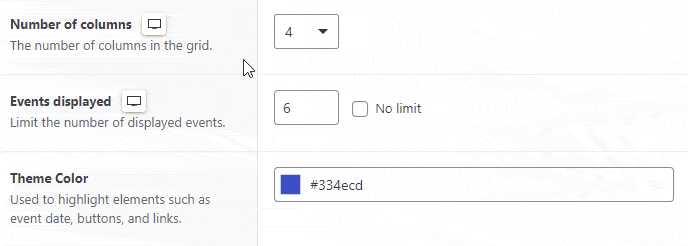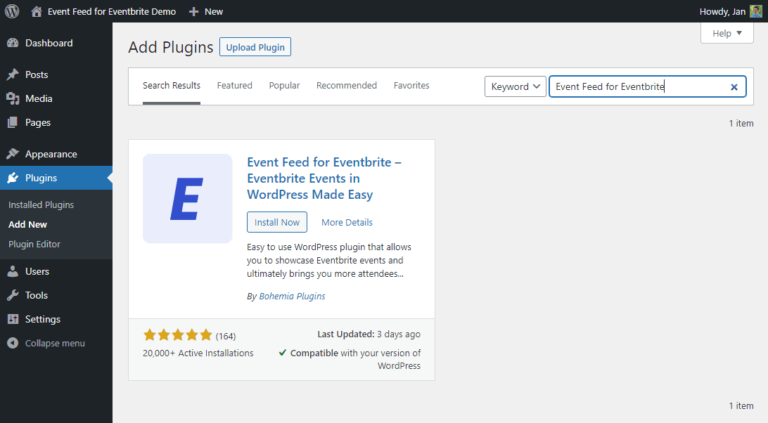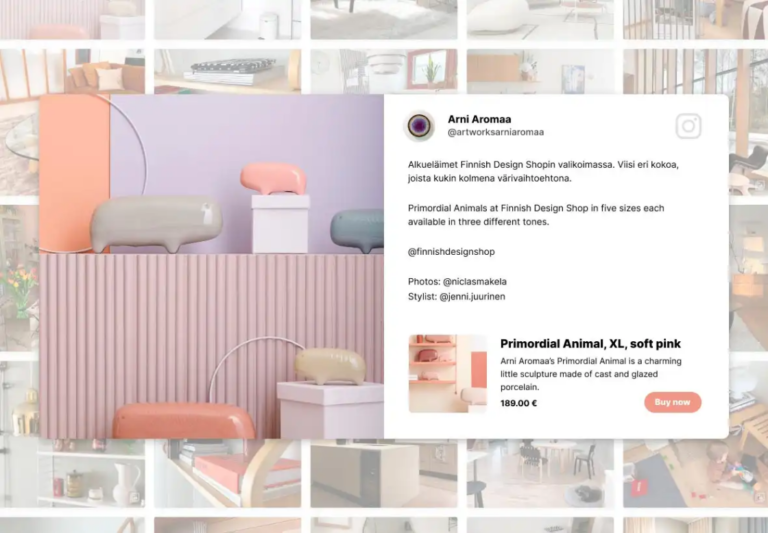Personal branding is a lesser-known strategy in B2B marketing, but it can transform your business.
In an environment where trust, authority, and long-term relationships are key, personal branding allows professionals to humanize their companies by showcasing individual expertise, values, and thought leadership. When you build a strong personal brand, you not only differentiate yourself from competitors but also establish credibility and authenticity, which resonates with other businesses.
In this article, we’ll explain how to build a personal brand that pays off for your B2B business and provide examples of B2B leaders doing this right.
What is Personal Branding in B2B?

Personal branding in B2B (Business-to-Business) refers to the practice of individuals, particularly business owners, executives, or employees, establishing and promoting their unique identity and expertise within their industry. The goal is to build trust, authority, and influence among peers, customers, partners, and stakeholders.
Unlike B2C (Business-to-Consumer), where branding often focuses on mass appeal, B2B personal branding is about cultivating deeper professional relationships, leveraging reputation, and becoming a recognized leader in a specific business niche.
What are the Elements of Personal Branding in B2B?

Here’s what personal branding in B2B looks like:
- Being a thought leader: sharing your insights and ideas through blogs, social media, or speaking at events helps position you as someone who really knows their stuff.
- Networking like a pro: it’s all about building solid relationships with other businesses, partners, and customers. The better your network, the more opportunities come your way.
- Building trust and credibility: people want to do business with those they trust. By being authentic, transparent, and consistent, you can build lasting connections that benefit both you and your business.
- Sharing valuable content: whether it’s tips, advice, or industry trends, giving people useful information shows that you know your stuff and are there to help.
- Using social media smartly: platforms like LinkedIn are gold for personal branding in B2B. You can share your achievements, engage with your network, and showcase your expertise.
- Consistency is key: make sure your personal brand aligns with your business values. You want people to trust you and your company as a package deal.
What are the Benefits of Personal Branding in B2B?

In competitive B2B markets, a personal brand can set you apart. It helps show what makes you unique compared to others offering similar products or services. Here’s why a great personal brand is important for B2B sales and marketing.
1. It Improves Brand Credibility
A personal brand can significantly enhance B2B brand credibility and trust by humanizing the business and creating deeper, more authentic connections. People trust people more than faceless companies. When a personal brand is closely tied to the business, it puts a face and personality behind the company, making it more relatable and trustworthy.
When clients and partners trust you personally, they’re more likely to stick with your business. That trust creates a deeper loyalty, which is especially valuable in B2B, where strong relationships are key to long-term success.
2. It Helps You Build a Strong Brand Reputation
Often in B2B, trust in the individual translates into trust in the company. A strong personal brand can elevate your business’s reputation and make it more appealing to potential clients.
When you, as an individual, are seen as credible, that credibility naturally extends to your company. If you’re regarded as a trustworthy expert, your business benefits from that positive reputation, attracting potential clients.
3: A Personal Brand Increases Trust, and Therefore Sales
A PWC survey found that 90% of business executives think customers highly trust their companies, while only 30% of consumers actually do. A strong personal brand can help your business earn customers’ trust.
By sharing your knowledge, successes, and even your challenges and mistakes, you showcase true authenticity and reliability. You’re keeping it real. This transparency reassures your potential clients that you are genuine and dependable, which makes it more likely they’ll trust you and your products or services.
4. It Helps Your Brand Stand Out
B2B markets are often crowded, with many businesses offering similar products or services. Differentiating yourself helps you get noticed and attract potential clients, especially if your value proposition is unique.
Personal branding allows individuals to showcase their expertise, values, and unique perspectives. When company leaders or employees have distinct personal brands, it can set the business apart from competitors who may be perceived as faceless corporations.
5. Personal Branding Improves Brand Loyalty

B2B sales cycles are often long and complex. Building brand loyalty leads to higher customer retention, reducing the need for repeated sales efforts. Loyal B2B clients often generate more revenue over time, as they are more likely to make larger purchases, upgrade services, or renew contracts, boosting customer lifetime value (CLV).
When a personal brand embodies transparency and authenticity, customers are more likely to trust the individual and, by extension, the brand. Trust is a key factor in brand loyalty, as consumers prefer doing business with companies they believe have integrity.
How to Build a Personal Brand in B2B

There are plenty of approaches to building a personal brand. Check out some of our personal branding strategies and tips below.
1. Choose a Platform
Choose a platform where you will engage your audience and build a loyal following.
There are many options here, but LinkedIn is often the top choice for B2B personal branding because it’s where decision-makers, industry leaders, and professionals connect. This makes it the perfect place to build a personal brand that amplifies your business or employer.
Once you set up your LinkedIn account, you’ll need to create an engaging and professional profile:
- Headline: use a clear and compelling headline that highlights your niche and value proposition.
- About section: write a concise summary that details your experience, skills, and what value you bring to businesses.
- Professional photo: invest in a high-quality, professional headshot to build trust.
- Banner image: use a custom banner that showcases your brand message or services.
- Experience and skills: list relevant roles, achievements, and skills that relate to your niche.
We’ve compiled more LinkedIn profile building tips to can help you.
2. Define Your Niche and Expertise
Before you start posting or engaging, clearly define what specific area you want to be known for. That way, you can attract and connect with a like-minded audience.
Your niche should be related to your audience’s pain point or the solution your business is selling. For example, say your business is selling a social media aggregator tool. In that case, your niche can be social selling or social strategies for businesses.
More tips for choosing a niche:
- Identify your strengths and what problems you solve for businesses.
- Research trends and topics that resonate with your target audience.
- Make sure your niche aligns with the needs and challenges of your ideal B2B clients.
3. Share Content Consistently
LinkedIn’s algorithm favors users who consistently post content, giving them better visibility. Regular content increases your chances of being seen in more feeds, which can lead to more profile views, connections, and engagement from your target audience.
Create a content calendar to make it easier to have a consistent posting schedule. A content calendar shows what you’ll share and when to share it, keeping you accountable.
Beyond sharing new posts on your profile, you can also achieve consistency by engaging with others through likes, shares, and comments. Find industry forums and LinkedIn groups, or even attend virtual events. Engage in meaningful conversations that showcase your expertise and interest in the field. This also boosts visibility, introducing your personal brand to a new audience.
Posting content can be intimidating, but don’t let the fear hold you back. Experiment and see what works. Even failures provide feedback. Worst case, it doesn’t get traction. Best case, it resonates with your audience and sets you apart.
4. Analyze and Learn From Those You Admire
Don’t just follow generic advice; study the personal branding strategies of people you admire. They don’t even have to be in your industry.
Look at how they communicate, where they are active, and how they handle criticism. Are they content machines, always hoarding and sharing valuable insights? Or do they have the strategic precision of a grandmaster in chess, guiding conversations and building narratives?
Note their tone, frequency, and engagement style. Are they informative, inspirational, or provocative? What style do you align with most? Use these insights to shape your own approach.
5. Amplify Your True Self
Personal branding is not about creating a fake, best-of version of a persona. It’s about amplifying your values and what excites you, which will make it easy for people to find you based on those.
Be authentic and let your passion shine through in your content and interactions. If you’re a no-nonsense, straight-talking expert, embrace it. If humor and storytelling are your strengths, let them shine. Avoid straying into areas that don’t align with your defined persona.
6. Leverage One-on-One Interactions
Personal branding isn’t about mass content. You also build your brand in direct conversations. These interactions can be more even impactful than public posts. Make sure that even in these seemingly small moments, you still focus on what aligns with your personal brand.
B2B Personal Branding Examples
We wouldn’t let you leave without some real examples of personal branding on LinkedIn. Check out these prime examples of people who’ve made a name for themselves with smart strategies.
1. Emmet Gibney
Emmet Gibney is the CEO of Rewardful, an affiliate marketing software primarily for SaaS businesses. He regularly shares tips on affiliate management, affiliate recruitment, and related topics on LinkedIn.
These topics help him connect with the audience, position Rewardful as a potential solution to their pain points, and build brand awareness. Here’s a sample post.
2. Peter Caputa
Peter Caputa is the CEO of Databox, a custom dashboards tool for marketing reporting. He has built a highly-engaged LinkedIn following by sharing marketing strategies and learnings from running a profitable, bootstrapped business.
These posts attract lots of attention and engagement, often translating into leads and revenue opportunities for the business. Here’s a sample post.
3. Neil Patel
Neil Patel is the co-founder of Neil Patel Digital, an award-winning marketing agency for businesses. Neil Patel’s personal brand is built on providing value, constantly. He shares actionable SEO and marketing advice, often backed by data and personal experience.
Neil’s focus is on educational and practical content, and his personal brand reflects that. It’s there to support his mission, not to overpower it. He frequently engages with his audience through comments and personalized advice, and in that, doubles down on demonstrating his expertise and willingness to help. Here’s a sample post.
Go Beyond LinkedIn for B2B Personal Branding
LinkedIn is a great platform for building a B2B personal brand, but your efforts shouldn’t end there. To really boost your B2B personal brand, it’s important to go beyond LinkedIn and get your content in front of more people.
Using a LinkedIn aggregator like Juicer is a great way to do this. It lets you display your LinkedIn posts right on your website, so visitors can check out your content without even leaving the page. This helps more people see your posts and keeps your personal brand front and center, wherever your audience is.
Want to learn more about Juicer’s features for personal branding? Try Juicer’s LinkedIn aggregator for free.





